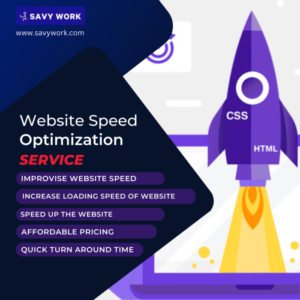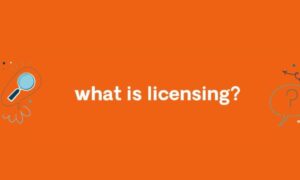
for eCommerce websites is crucial for businesses aiming to enhance their online presence and drive more sales. With the digital marketplace continuously growing, mastering search engine optimization becomes paramount for retailers striving to stand out in a crowded field.
From optimizing product descriptions to leveraging social media and video marketing, effective strategies can significantly enhance visibility, attract potential customers, and ultimately improve conversion rates. This overview will explore essential techniques and considerations necessary to elevate your eCommerce website’s performance.
Search Engine Marketing Strategies
Search Engine Marketing (SEM) is critical for eCommerce websites aiming to enhance their visibility and drive traffic. By employing effective strategies, businesses can ensure that they are not only reaching their target audience but also converting them into loyal customers. This discussion delves into various techniques that can boost search visibility, integrate paid advertising with organic efforts, and highlight successful campaigns that exemplify these strategies.
Techniques for Enhancing Visibility in Search Results
Improving visibility in search results involves a combination of optimization, on-page , and technical . Utilizing tools like Google’s Planner can aid in identifying high-performing s that are relevant to your products.
- Optimization: Selecting the right s is essential. Focus on long-tail s that have lower competition but high intent to purchase.
- On-Page : Ensure that product descriptions, titles, and meta tags are optimized with targeted s. This will help search engines understand the context of your content.
- Technical : Site speed, mobile-friendliness, and secure connections (HTTPS) are vital. Improving these aspects can enhance user experience and search rankings.
Integrating Paid Advertising with Organic Efforts
Combining paid advertising with organic search efforts can create a powerful strategy that maximizes visibility. Paid ads can provide immediate traffic, while organic efforts build long-term presence.
- Utilizing Google Ads: Start with targeted ads based on s identified through organic strategies. This can drive quick traffic to your site.
- Remarketing Campaigns: Target users who have previously visited your site with tailored ads, encouraging them to return and complete their purchase.
- Cross-Promotion: Use social media and content marketing to support both paid and organic campaigns. For instance, promote special offers through social channels to enhance visibility.
Examples of Successful Search Engine Marketing Campaigns
Analyzing successful SEM campaigns offers insightful lessons for eCommerce brands. Certain brands have effectively utilized innovative approaches to enhance their online visibility.
- Blue Apron: Their use of targeted Google Ads and social media campaigns not only increased their reach but also improved conversion rates significantly.
- Warby Parker: By integrating with a strong content marketing strategy, they have positioned themselves as a thought leader in their industry while driving organic traffic.
- Airbnb: Using a combination of paid search ads and , Airbnb has successfully maintained a competitive advantage in the travel sector, attracting millions of visitors globally.
Internet Security Best Practices
In the ever-evolving landscape of eCommerce, ensuring the security of online platforms is paramount. With a significant amount of consumer data being exchanged, eCommerce businesses must prioritize safeguarding this information to maintain customer trust and compliance with regulations.To effectively secure eCommerce platforms, various measures must be implemented to deter potential threats and safeguard sensitive information. These security measures not only protect customer data but also enhance the overall credibility of the online business.
Essential Security Measures for eCommerce Platforms
Implementing essential security measures is crucial for eCommerce platforms to mitigate risks and protect user data. Key strategies include:
- Secure Socket Layer (SSL) Certificates: SSL certificates encrypt data exchanged between the user and the website, ensuring that sensitive information like credit card details remain confidential during transmission.
- Regular Software Updates: Keeping all software, including CMS, plugins, and payment gateways, updated protects against vulnerabilities that cybercriminals may exploit.
- Strong Password Policies: Enforcing complex password requirements and encouraging regular password changes can significantly reduce the risk of unauthorized access to user accounts.
- Two-Factor Authentication (2FA): Implementing 2FA adds an additional layer of security by requiring users to provide two forms of identification before accessing their accounts.
Implications of Data Breaches on Online Businesses
Data breaches can have severe implications for online businesses, impacting not only financial health but also brand reputation. The consequences include:
- Financial Loss: Data breaches often lead to substantial costs associated with forensic investigations, customer notifications, and legal penalties. For instance, the cost of a single data breach can average millions of dollars, depending on the scale.
- Loss of Customer Trust: Once a data breach occurs, customers may lose confidence in the business, resulting in decreased sales and customer loyalty. A 2020 study indicated that 81% of consumers would stop doing business with a company after a breach.
- Legal and Regulatory Ramifications: Businesses may face legal actions from customers or regulatory bodies, especially if found non-compliant with data protection laws like GDPR or CCPA.
Comparison of Security Protocols for User Information
Different security protocols exist to safeguard user information, each offering varying levels of protection and complexity. The most prevalent protocols include:
- Transport Layer Security (TLS): TLS is the modern version of SSL and is widely used to secure communications over computer networks. It provides robust encryption, ensuring data integrity and privacy.
- Secure Hypertext Transfer Protocol (HTTPS): Websites using HTTPS protect user data by encrypting the communication channel between the user’s browser and the server, making it a standard for secure eCommerce transactions.
- Payment Card Industry Data Security Standard (PCI DSS): Compliance with PCI DSS is mandatory for businesses that handle card payments. It establishes security requirements for protecting customer payment information.
“Implementing solid security measures not only defends against cyber threats but also builds a foundation of trust with customers, crucial for long-term business success.”
Web Design and Development Essentials
Creating an effective eCommerce website requires a meticulous approach to web design and development. A well-structured site not only enhances user experience but also drives sales and builds customer trust. Focusing on key elements of user-friendly design will ensure that your website stands out in a competitive market.
User-Friendly eCommerce Website Design Elements
User-friendly design is essential for retaining customers and encouraging repeat visits. Key elements include:
- Intuitive Navigation: A clear and concise menu structure helps users find what they’re looking for quickly. Categories should be logically organized, and a search bar should be prominently placed.
- Visual Hierarchy: Effective use of color, size, and layout guides users’ attention toward important information and calls to action, such as ‘Add to Cart’ buttons.
- High-Quality Images: Professional images enhance product appeal. Images should be zoomable and showcase products from multiple angles.
- Readability: Use legible fonts and adequate contrast between text and background to improve readability. Ensure that content is scannable with bullet points and short paragraphs.
- Clear Call-to-Actions (CTAs): CTAs should be prominently displayed and clearly worded, guiding users on the next steps they should take.
Website Performance and Speed Optimization Checklist
Optimizing website performance is crucial for providing a seamless user experience. Here’s a checklist to improve speed:
- Minimize HTTP requests by combining CSS and JavaScript files.
- Optimize images by compressing them without sacrificing quality.
- Leverage browser caching to reduce load time for returning visitors.
- Use a content delivery network (CDN) to deliver content faster to users across various locations.
- Implement lazy loading for images and videos to only load them when they enter the viewport.
- Regularly monitor website performance using tools like Google PageSpeed Insights or GTmetrix.
Importance of Responsive Design for Mobile Users
With a significant portion of online shopping conducted on mobile devices, responsive design is no longer optional—it’s a necessity. Responsive design ensures that your website adjusts seamlessly to different screen sizes, enhancing the shopping experience for mobile users. Key advantages of responsive design include:
- Improved User Experience: A mobile-optimized site provides a smoother navigation experience, encouraging users to stay longer and make purchases.
- Higher Conversion Rates: Mobile-friendly websites typically see higher conversion rates, as users are more likely to complete transactions on sites that function well on their devices.
- Better Performance: Search engines, like Google, prioritize mobile-friendly sites in their rankings, increasing visibility and attracting more traffic.
- Cost-Effectiveness: Maintaining a single responsive site is more cost-effective than managing separate mobile and desktop versions.
Social Media Strategies for eCommerce
In today’s digital landscape, social media has become an indispensable tool for eCommerce businesses looking to boost their visibility and sales. With billions of active users across various platforms, the potential to reach and engage with customers has never been greater. Implementing effective social media strategies can significantly enhance your brand’s online presence and drive traffic to your eCommerce site.To successfully promote products on social networks, brands must adopt techniques that resonate with their target audience.
Successful eCommerce brands leverage a mix of organic and paid strategies to maximize their reach. This includes creating visually appealing content, engaging with followers, and utilizing platform-specific features such as Stories, Reels, and live streaming. By building a strong presence on social media, brands can create a community around their products and foster loyalty among consumers.
Promotion Techniques on Social Networks
Promoting products effectively on social media involves a variety of techniques that cater to different audience preferences. Here are key methods to consider:
- High-Quality Visual Content: Use eye-catching images and videos showcasing your products in action. For example, lifestyle images that depict the product being used can significantly increase engagement.
- Influencer Partnerships: Collaborate with influencers who align with your brand values. Their endorsement can introduce your products to a broader audience, enhancing credibility.
- Targeted Ads: Utilize platform algorithms to create targeted ads based on user demographics, interests, and behaviors to reach potential customers more effectively.
- Promotional Campaigns: Run exclusive promotions, discounts, or giveaways on social media to encourage user participation and sharing.
- Live Demonstrations: Host live sessions on platforms like Instagram or Facebook to showcase products, answer questions, and provide real-time interactions with potential customers.
User-Generated Content and Brand Trust
User-generated content (UGC) plays a crucial role in building brand trust and authenticity. Consumers are increasingly looking for reviews and recommendations from their peers rather than traditional advertising. UGC can include photos, videos, or testimonials shared by satisfied customers. This type of content not only showcases real-life usage of products but also creates a sense of community among users.Incorporating UGC into your social media strategy can enhance your brand’s credibility.
Here’s how to effectively leverage user-generated content:
- Encourage Sharing: Create branded hashtags and encourage customers to share their experiences using your products. This can generate a wealth of authentic content for your brand.
- Feature UGC: Regularly showcase customer photos or testimonials on your social media profiles. This not only acknowledges your customers but also provides social proof to potential buyers.
- Run Contests: Host contests that incentivize customers to create and share content featuring your products. This can increase engagement and generate excitement around your brand.
Engagement Best Practices on Social Media Platforms
Engaging with customers on social media is essential for fostering loyalty and maintaining a positive brand image. To effectively connect with your audience, consider the following best practices:
- Timely Responses: Aim to respond to customer inquiries or comments promptly. This demonstrates that you value their input and are attentive to their needs.
- Personalized Interactions: Tailor responses to individual comments or messages. Personalization can create a stronger connection with your audience.
- Regular Content Updates: Consistently share fresh content to keep your audience engaged. This includes promotions, news, and valuable tips related to your products.
- Community Building: Create a sense of community by encouraging discussions among followers. Pose questions, share industry news, and invite feedback.
- Analytics-Driven Adjustments: Utilize analytics tools to measure engagement and adjust your strategies accordingly. Understanding what resonates with your audience is key to long-term success.
Video Marketing Techniques

Video marketing has emerged as a powerful tool for eCommerce businesses, offering a dynamic way to engage customers and showcase products. By leveraging video content, brands can not only highlight product features but also convey the brand story in a more compelling manner. This section delves into effective video marketing techniques that can elevate your online store’s presence.
Creating Impactful Product Videos
Crafting product videos that resonate with viewers is essential for driving sales. An impactful product video should highlight key features, demonstrate usage, and connect emotionally with the audience. Here are elements to consider when creating such videos:
- Storytelling: Engage viewers by weaving a narrative around your product that illustrates its benefits and uses in real-life scenarios.
- High-Quality Visuals: Invest in good lighting and camera equipment to ensure your videos are visually appealing. Crisp visuals are crucial in capturing the attention of potential customers.
- Short and Concise: Keep videos between 30 seconds to 2 minutes. This timeframe is optimal for maintaining viewer attention while effectively communicating your message.
- Call to Action: Conclude each video with a strong call to action. Encourage viewers to visit your site, sign up for newsletters, or make a purchase.
Using Live Streaming for Product Launches
Live streaming has gained traction as a powerful method for launching products in real-time. This approach fosters an interactive experience, allowing brands to engage directly with their audience. Consider the following strategies when planning a live product launch:
- Preparation: Artikel a clear agenda for the live stream, including key talking points and product demonstrations to provide structure to the event.
- Engagement: Utilize interactive features such as polls, Q&A sessions, and live chats to keep viewers engaged and to address questions in real time.
- Promotion: Advertise the live stream in advance across various channels, including social media and email newsletters, to maximize attendance.
- Post-Event Content: After the live stream, repurpose the content into shorter clips or highlight reels for continued engagement on social media platforms.
Optimizing Video Content for Better Reach and Engagement
To maximize the effectiveness of your video marketing efforts, optimizing your content for search engines and viewer engagement is key. Here are some essential optimization techniques:
- Best Practices: Utilize relevant s in your video title, description, and tags to improve search visibility. This increases the chances of your videos appearing in search results.
- Compelling Thumbnails: Create eye-catching thumbnails that accurately represent the video content. Thumbnails serve as the first impression for potential viewers and can significantly impact click-through rates.
- Video Transcriptions: Provide video transcriptions in the description to enhance accessibility, improve , and cater to audiences who prefer reading over watching.
- Engagement Metrics: Monitor engagement metrics such as watch time, likes, and shares. Analyzing these metrics helps in refining future video strategies for better performance.
Optimizing video content not only boosts discoverability but also enhances viewer retention and engagement.
Site Promotion Tactics

Promoting an eCommerce website effectively involves employing various strategies to enhance visibility and drive sales. By utilizing a combination of affiliate marketing, backlink building, and exploring diverse promotional channels, businesses can significantly improve their online presence and attract more visitors.
Affiliate Marketing Strategies
Affiliate marketing is a powerful tool for boosting sales, as it allows businesses to leverage the reach of partners or influencers who promote products in exchange for a commission. This performance-based strategy not only broadens exposure but also fosters trust with potential customers. Here are some effective methods to implement affiliate marketing in eCommerce:
- Create an attractive affiliate program that offers competitive commissions and incentives.
- Partner with influencers and bloggers in your niche to tap into their audiences.
- Utilize affiliate networks to connect with potential partners, expanding your reach.
- Provide affiliates with high-quality marketing materials, such as banners and product images, to facilitate their promotional efforts.
The success of affiliate marketing hinges on building strong relationships with affiliates and consistently monitoring performance to make necessary adjustments.
Building Backlinks to Improve Site Authority
Backlinks play a crucial role in establishing a website’s authority and improving its ranking on search engines. Quality backlinks signal to search engines that your site is reputable and valuable, which can lead to increased organic traffic.To effectively build backlinks, consider the following strategies:
- Guest posting on reputable websites in your industry to gain exposure and link back to your site.
- Creating shareable content, such as infographics or comprehensive guides, that others want to link to.
- Engaging in community forums or social media groups where you can share insights and link back to relevant content on your site.
- Collaborating with other businesses for joint ventures or partnerships that include backlink opportunities.
The emphasis should be on earning high-quality backlinks from authoritative sites, as this will have a more significant impact on your efforts than a large number of low-quality links.
Comparison of Promotional Channels
Different promotional channels can yield varying results in terms of traffic generation and sales conversions. Understanding the strengths and weaknesses of each channel is essential for effective allocation of marketing resources.Consider the following promotional channels and their effectiveness:
| Channel | Effectiveness | Benefits |
|---|---|---|
| Social Media | High engagement, brand awareness | Direct communication with customers, viral marketing potential |
| Email Marketing | Strong ROI | Personalized outreach, high conversion rates |
| Long-term traffic, credibility | Cost-effective, sustainable growth | |
| PPC Advertising | Immediate traffic | Highly targeted, measurable results |
Each channel has its unique strengths, and a diversified approach often yields the best results for eCommerce sites.
Social Bookmarking for
Social bookmarking is a valuable strategy for eCommerce websites aiming to enhance their visibility and drive organic traffic. By leveraging bookmarking sites, businesses can share their content, products, and promotions with a broader audience, effectively improving their search engine rankings and brand awareness.Utilizing bookmarking sites involves a straightforward yet effective process. First, create an account on relevant bookmarking platforms to establish a presence.
After that, submit your web pages, blog posts, or product pages to these sites. It’s essential to include compelling descriptions and tags to make your submissions more appealing. Regularly updating your bookmarks and interacting with other users can also enhance your profile and increase the likelihood of referral traffic.
Top Bookmarking Platforms for eCommerce
Choosing the right bookmarking platforms is crucial for maximizing your eCommerce site’s exposure. Here’s a list of some of the top bookmarking platforms that are particularly effective for online retailers:
- Pinterest: A visual discovery platform ideal for sharing product images and ideas.
- Reddit: A social news aggregation site where niche communities can share content and drive traffic.
- Delicious: A classic platform focused on saving and sharing links.
- StumbleUpon (now Mix): A discovery engine that helps users find and share great content, perfect for niche products.
- Digg: A platform that allows users to submit and vote on content, making it easy for high-quality posts to gain visibility.
Engaging with the community on these platforms plays a significant role in driving referral traffic. By participating in discussions, commenting on others’ posts, and sharing valuable insights, eCommerce businesses can foster relationships and gain credibility. Community interaction not only boosts profile visibility but also encourages users to visit your linked content, leading to increased traffic and potential conversions.
Active community engagement is essential for turning casual visitors into loyal customers.
By systematically using social bookmarking and actively participating in relevant communities, eCommerce websites can harness the power of these platforms to enhance their efforts and grow their online presence.
Web Hosting Considerations
Selecting the right web hosting provider is a vital step in establishing a successful eCommerce website. It impacts your site’s performance, security, and overall user experience. With multiple hosting options available, understanding the critical factors can help ensure you make an informed decision that meets your business needs.Server speed is a crucial factor that significantly influences eCommerce performance. Faster servers result in quicker loading times, enhancing user experience and reducing bounce rates.
A delay of even a second can lead to significant losses in sales, as customers are likely to abandon slow-loading websites. Thus, it’s essential to prioritize server speed when choosing a hosting provider.
Critical Factors in Choosing a Hosting Provider
When selecting a web hosting provider, several critical factors should be taken into account to ensure optimal performance and reliability. These factors include uptime guarantees, technical support, pricing, and scalability.
- Uptime Guarantee: A good hosting provider should offer at least a 99.9% uptime guarantee. This ensures your website is accessible at all times, preventing potential loss of income.
- Technical Support: Reliable customer support is vital. Look for providers that offer 24/7 support via multiple channels such as live chat, email, and phone.
- Pricing: Evaluate the cost against features offered, including SSL certificates, backups, and domain registration. Cheaper isn’t always better; ensure you get a good balance of price and performance.
- Scalability: As your business grows, your hosting needs may change. Choose a provider that offers easy upgrade options without significant downtime.
Impact of Server Speed on eCommerce Performance
Server speed is a game-changer in the eCommerce landscape. A faster website not only improves user experience but also boosts your search engine rankings. Search engines prioritize websites that load quickly, allowing them to rank higher in search results.
“According to Google, a website that loads in 5 seconds is more likely to achieve higher conversion rates than one that loads in 10 seconds.”
Real-life cases show that companies like Amazon reported a 1% increase in sales for every 100 milliseconds of improvement in page load time. This statistic emphasizes the tangible benefits of investing in a fast server.
Understanding Different Hosting Options
There are several types of hosting options available, each with its unique advantages and disadvantages. Knowing these options will help you determine which is best suited for your eCommerce needs.
- Shared Hosting: Cost-effective for startups. Multiple websites share the same server resources, which may affect performance during high traffic periods.
- VPS Hosting: Offers more resources compared to shared hosting. Your website is allocated a specific portion of server resources, enhancing performance and stability.
- Dedicated Hosting: Provides an entire server for your website. This option is ideal for larger eCommerce sites needing high performance and security but comes at a higher cost.
- Cloud Hosting: Utilizes a network of servers, allowing for scalability and flexibility. This option can handle traffic spikes effectively, which is perfect for eCommerce businesses facing fluctuating demands.
Final Review
In summary, understanding and implementing for eCommerce websites can transform your online business by increasing traffic and boosting sales. By focusing on effective strategies like search engine marketing, social media engagement, and robust web design, you can create a strong foundation for long-term success in the competitive eCommerce landscape.
FAQs
What is and why is it important for eCommerce?
, or Search Engine Optimization, helps increase your website’s visibility on search engines, driving more organic traffic to your eCommerce site, which can lead to higher sales.
How can I improve my product page ?
To improve product page , focus on using relevant s, high-quality images, detailed product descriptions, and user reviews.
What role does mobile optimization play in eCommerce ?
Mobile optimization is critical, as a significant portion of online shopping occurs on mobile devices; Google also prioritizes mobile-friendly sites in search rankings.
How often should I update my eCommerce website for ?
Regularly updating your content, product listings, and blog posts is essential to keep your fresh and relevant, ideally on a monthly or quarterly basis.
Can social media impact my eCommerce ?
Yes, social media can enhance your by driving traffic to your site, increasing brand visibility, and providing backlinks, all of which contribute positively to your search rankings.





